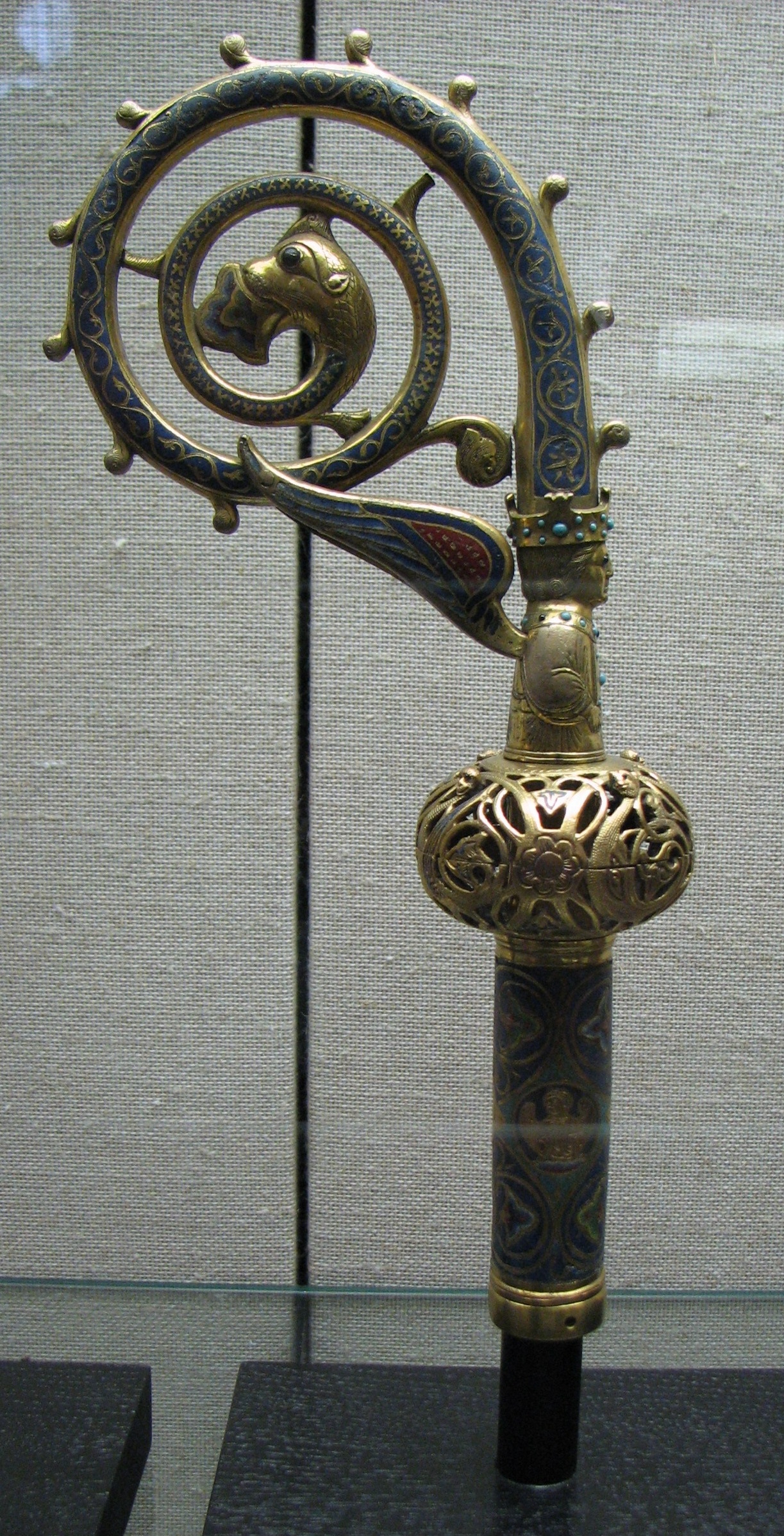Crozier (mycology) on:
[Wikipedia]
[Google]
[Amazon]
 A crozier is an anatomical feature of many fungi in the phylum
A crozier is an anatomical feature of many fungi in the phylum
Mycology glossary sketch of crozier
Glossary sketch of crozier (click on eye image next to "crozier")
Ascomycota Fungal morphology and anatomy
 A crozier is an anatomical feature of many fungi in the phylum
A crozier is an anatomical feature of many fungi in the phylum Ascomycota
Ascomycota is a phylum of the kingdom Fungi that, together with the Basidiomycota, forms the subkingdom Dikarya. Its members are commonly known as the sac fungi or ascomycetes. It is the largest phylum of Fungi, with over 64,000 species. The def ...
that forms at the base of asci and looks like a hook-topped shepherd’s staff or stylized religious crosier
A crozier or crosier (also known as a paterissa, pastoral staff, or bishop's staff) is a stylized staff that is a symbol of the governing office of a bishop or abbot and is carried by high-ranking prelates of Roman Catholic, Eastern Catho ...
. Croziers resemble and function similarly to clamp connection
A clamp connection is a hook-like structure formed by growing hyphal cells of certain fungi. It is a characteristic feature of basidiomycete fungi. It is created to ensure that each cell, or segment of hypha separated by septa (cross walls), rece ...
s on the dikaryotic hyphae of Basidiomycota
Basidiomycota () is one of two large divisions that, together with the Ascomycota, constitute the subkingdom Dikarya (often referred to as the "higher fungi") within the kingdom Fungi. Members are known as basidiomycetes. More specifically, Basi ...
.
During initial ascus
An ascus (; : asci) is the sexual spore-bearing cell produced in ascomycete fungi. Each ascus usually contains eight ascospores (or octad), produced by meiosis followed, in most species, by a mitotic cell division. However, asci in some gen ...
formation in Ascomycota fruitbodies, the crozier helps to maintain the dikaryotic
The dikaryon (karyogamy) is a cell nucleus feature that is unique to certain fungi. (The green alga ''Derbesia'' had been long considered an exception, until the heterokaryotic hypothesis was challenged by later studies.) Compatible cell-types ca ...
state of both the ascus itself and of the side branch that will continue propagation of the ascogenous hyphae. The tips of developing asci on these ascogenous hyphae curl over. One haploid
Ploidy () is the number of complete sets of chromosomes in a cell (biology), cell, and hence the number of possible alleles for Autosome, autosomal and Pseudoautosomal region, pseudoautosomal genes. Here ''sets of chromosomes'' refers to the num ...
nucleus migrates into the curved tip while the other compatible haploid nucleus remains in the penultimate space below the hook. The ascus itself forms as a radiating spur branch at the top of the hook. Each nucleus
Nucleus (: nuclei) is a Latin word for the seed inside a fruit. It most often refers to:
*Atomic nucleus, the very dense central region of an atom
*Cell nucleus, a central organelle of a eukaryotic cell, containing most of the cell's DNA
Nucleu ...
divides, resulting in the formation of a pair of compatible nuclei, i.e. a dikaryon
The dikaryon (karyogamy) is a cell nucleus feature that is unique to certain fungi. (The green alga '' Derbesia'' had been long considered an exception, until the heterokaryotic hypothesis was challenged by later studies.) Compatible cell-types c ...
, in the ascus, which is now the penultimate space. Two sister nuclei remain, one in the basal cell and the other in the crozier tip. The tip of the crozier then fuses with the basal cell and walls itself off from the ascus by the formation of a septum
In biology, a septum (Latin language, Latin for ''something that encloses''; septa) is a wall, dividing a Body cavity, cavity or structure into smaller ones. A cavity or structure divided in this way may be referred to as septate.
Examples
Hum ...
. The nucleus from the crozier migrates into the basal cell where the other nucleus remains, thus maintaining a dikaryotic state. Below the base of the ascus, these nuclei migrate together into a growing side branch which is capable of repeating the ascus-crozier formation process indefinitely. Mature croziers are detectable through microscopic examination of mature asci as small, curved bridges at the basal septa. A significant minority of Ascomycota lack croziers, hence the presence or absence of croziers is an important taxonomic character.
References
{{reflistExternal links
Mycology glossary sketch of crozier
Glossary sketch of crozier (click on eye image next to "crozier")
Ascomycota Fungal morphology and anatomy